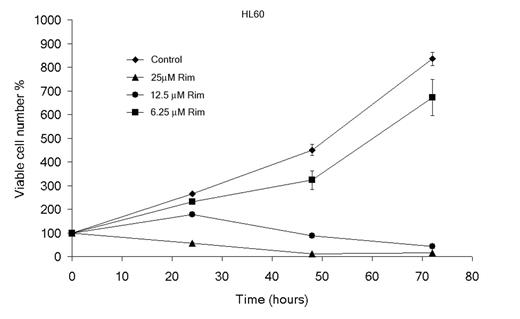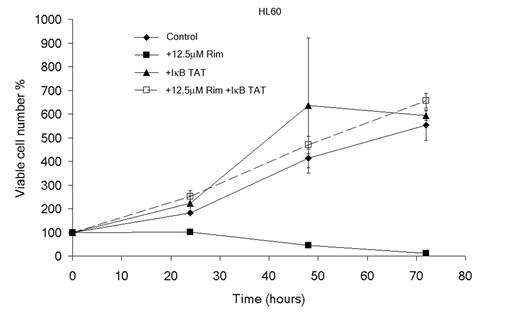Abstract
The cure rates for most subtypes of acute myeloid leukaemia (AML) have been static for a decade or more. Risk directed therapy is paying dividends for younger patients with AML characterised by balanced translocations, but therapeutic success is more limited for the majority of patients. Although several new therapeutic options are available to prolong survival in myeloma, cure is rarely attainable. Thus novel therapeutic approaches are required for both diseases. Sigma receptors are widely expressed in the cells of the nervous system, and are aberrantly increased in malignant tumour cells, including hematological malignancies. Sigma receptor antagonists have previously been tested in humans as candidiate antipsychotics and also in diagnostic tumour imaging. We have previously shown that sigma receptor antagonists induce apoptotic cell death in a range of cancer cell lines, while sparing normal cells (Spruce et all 2004).
To investigate the potential for sigma receptor ligands in the treatment of hematological malignancies, we studied the effect of rimcazole, a sigma receptor antagonist, in 3 established and well characterized cells lines derived from malignant haemopoetic cells - HL60, K562 and OPM-2. Rimcazole induced dose-dependent cell death in all 3 haemopoetic cell lines.
Rimcazole induced cell death was shown to be apoptotic, as assessed by FACS analysis using Annexin V and Propidium Iodide staining as markers of apoptosis. Rimcazole also inhibited colony formation by HL60 and K562 cell lines in a standard methycellulose assay in a dose-dependent manner.
Malignant hematological cells are known to have increased NF kappaB activity. Suppression of NF kappaB activity by treatment with a TAT-tagged IkappaB superepressor peptide resulted in attenuation of rimcazole-induced cell death.
This suggests an NF kappaB-dependent pathway of rimcazole action. We also measured the I kappaB levels in the 3 cell lines after treating them with rimcazole. Decreased concentration of IkappaB was detected by Western Blot method in the samples treated with Rimcazole. Untreated cells were used as control.
We further evaluated in vitro response of primary AML cells stored in the tissue bank from 3 patients diagnosed with AML. The primary AML cells also showed dose dependent death on treatment with Rimcazole. The drug concentrations at which the optimum effect was observed was similar for the 3 primary AML cells as well as established cell lines.
Evaluation of sigma receptor antagonists in other primary leukaemic and myeloma cells is currently in progress.
Author notes
Corresponding author



This feature is available to Subscribers Only
Sign In or Create an Account Close Modal